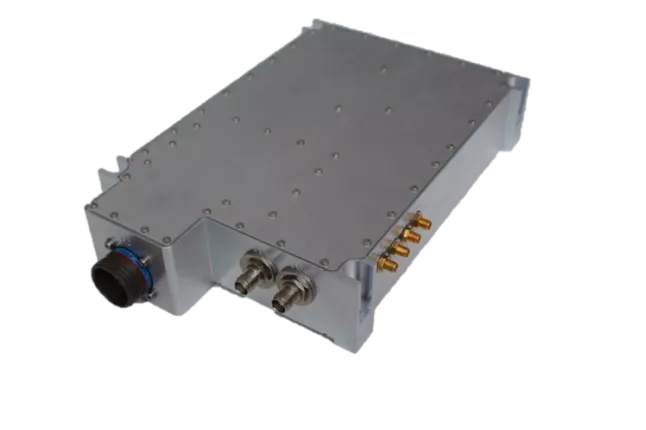
GNSS Receivers and Their Impact on Autonomous Systems
The rapid evolution of autonomous systems is reshaping industries and redefining what’s possible with technology. From self-driving cars to drones and industrial robotics, autonomous systems rely on accurate navigation to operate effectively. At the core of this revolution lie GNSS receivers, which provide the precise positioning and timing needed for these systems to function. Their integration has had a profound impact, enabling innovations that were once considered futuristic.
In this article, we’ll delve into the role of GNSS receivers in autonomous systems, explore their benefits, and discuss how they’re driving advancements across various industries.
What Are GNSS Receivers?
A Global Navigation Satellite System (GNSS) receiver is a device that processes signals from satellite constellations such as GPS, GLONASS, Galileo, and BeiDou. These receivers calculate the precise location, velocity, and time of a device, making them an essential component of autonomous systems.
GNSS receivers use multiple satellite signals to provide accuracy, redundancy, and resilience, ensuring reliable operation even in challenging environments.
Also Check Mosaic Clicker.
Why GNSS Receivers Are Vital for Autonomous Systems
Autonomous systems rely on precise navigation to interact with the real world effectively. Here’s why GNSS receivers are indispensable:
- Precision and Accuracy: Centimeter-level positioning accuracy is critical for tasks such as lane-keeping in self-driving cars or pinpoint landing of drones.
- Global Coverage: GNSS receivers offer worldwide access to satellite signals, making them versatile for global applications.
- Resilience in Adverse Conditions: Multi-constellation support ensures that navigation remains uninterrupted even in areas with signal obstructions, such as urban canyons or forests.
- Synchronization: Precise timing is essential for coordinating complex tasks, especially in autonomous fleets or synchronized operations.
Applications of GNSS Receivers in Autonomous Systems
1. Autonomous Vehicles
Self-driving cars are perhaps the most well-known application of autonomous systems. GNSS receivers are central to these vehicles, enabling:
- Lane-level Navigation: Accurate positioning ensures the car remains within its lane.
- Route Optimization: Real-time data integration helps determine the most efficient paths.
- Safety and Reliability: Redundant GNSS signals ensure navigation even in challenging environments.
2. Drones and UAVs
Unmanned Aerial Vehicles (UAVs) rely on GNSS receivers for:
- Precision Landing: GNSS-guided drones can land accurately in specific locations.
- Aerial Mapping: High-resolution mapping requires exact positioning for accurate geotagging.
- Autonomous Missions: GNSS enables drones to follow pre-determined flight paths autonomously.
3. Industrial Robotics
In smart factories and warehouses, GNSS receivers help autonomous robots:
- Navigate Efficiently: Robots can move seamlessly within defined spaces.
- Coordinate Tasks: Timing synchronization ensures collaboration between multiple units.
- Avoid Obstacles: With precise location data, robots can identify and bypass obstacles.
4. Maritime and Aviation Systems
In maritime and aviation industries, GNSS receivers are critical for:
- Autonomous Ships: Ensuring safe navigation in open waters.
- Aircraft Guidance: Supporting autonomous flight paths and landings.
The Benefits of GNSS Receivers in Autonomous Systems
1. Enhanced Safety
Accurate GNSS data helps prevent collisions, ensure safe navigation, and maintain operational integrity, especially in high-stakes environments like autonomous driving or aviation.
2. Increased Efficiency
Autonomous systems powered by GNSS receivers can optimize routes, reduce fuel consumption, and minimize delays, offering significant cost savings for businesses.
3. Scalability for Large-Scale Operations
GNSS receivers support scalable solutions, making it easier to deploy autonomous systems across industries such as logistics, agriculture, and public transport.
4. Resilience in Challenging Environments
Modern GNSS receivers are equipped with anti-jamming and anti-spoofing features, ensuring reliable operation even in adverse conditions or against intentional interference.
Challenges in GNSS Integration for Autonomous Systems
1. Signal Interference
Autonomous systems can face disruptions from natural or artificial sources, such as dense urban environments or jamming attempts.
2. Cost of High-Precision GNSS Receivers
Advanced GNSS receivers with RTK (Real-Time Kinematic) or PPK (Post-Processed Kinematic) capabilities can be expensive for large-scale deployment.
3. Dependence on Satellite Availability
Autonomous systems must be designed to handle situations where GNSS signals are weak or unavailable, requiring backup navigation systems like inertial sensors.
Advancements in GNSS Technology for Autonomous Systems
1. Multi-Frequency Receivers
Multi-frequency GNSS receivers process signals from multiple frequency bands, improving accuracy and reducing multipath errors.
2. Integration with AI and Sensors
GNSS receivers are increasingly integrated with AI algorithms and sensors like LiDAR and cameras, enabling autonomous systems to operate seamlessly in complex environments.
3. Resilient GNSS Solutions
Technologies such as anti-jamming, anti-spoofing, and signal authentication enhance the security and reliability of GNSS receivers.
4. Satellite Augmentation Systems
Advanced satellite augmentation systems like SBAS (Satellite-Based Augmentation Systems) and PPP (Precise Point Positioning) improve GNSS performance for critical applications.
Future Prospects of GNSS Receivers in Autonomous Systems
The future of GNSS receivers in autonomous systems is promising, with continued innovation pushing the boundaries of what these systems can achieve. Key trends include:
- Higher Accuracy Levels: Centimeter-level positioning is becoming standard.
- Greater Affordability: Reduced costs will make high-precision GNSS solutions accessible to more industries.
- Increased Resilience: GNSS receivers will become even more robust against interference.
- Expanded Use Cases: From urban air mobility to underwater navigation, GNSS receivers will unlock new possibilities for autonomous systems.
Conclusion
GNSS receivers have revolutionized the field of autonomous systems, providing the precise navigation and timing required to make these technologies viable. From self-driving cars to industrial robotics, the impact of GNSS is profound, enabling safer, more efficient, and scalable operations.
As GNSS technology continues to advance, the role of these receivers will only grow, paving the way for a future where autonomous systems are seamlessly integrated into every aspect of our lives. For businesses and industries looking to leverage this technology, investing in robust, high-precision GNSS solutions is no longer optional—it’s essential.
